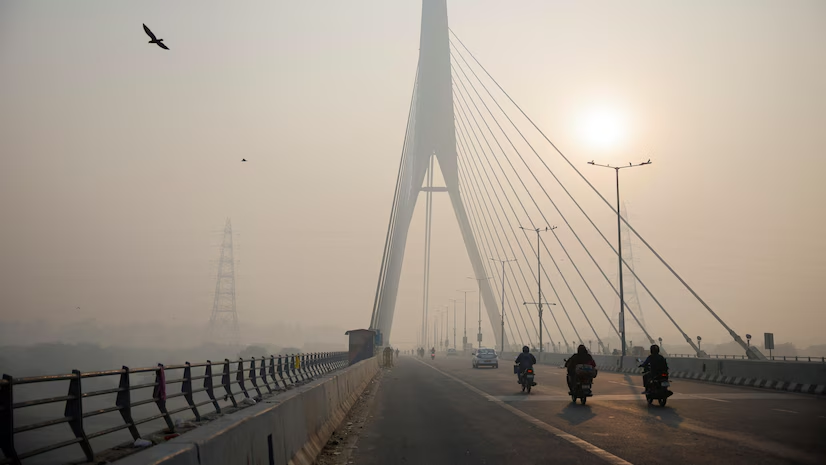New Delhi: Delhi’s air quality has improved to the ‘moderate’ category as of Monday, thanks to record rainfall that occurred between last Friday and Saturday.
As of around 6 a.m. on Monday, the overall Air Quality Index (AQI) in Delhi was reported at 183.
According to the Central Pollution Control Board (CPCB), the AQI classifications are as follows: 0-50 is considered “good,” 51-100 “satisfactory,” 101-200 “moderate,” 201-300 “poor,” 301-400 “very poor,” 401-450 “severe,” and above 450 “severe plus.”
Out of 38 monitoring stations in the city tracked by the Sameer app, which provides hourly AQI updates, 23 stations reported AQI levels in the moderate range, while one station, IHBAS in Dilshad Garden, recorded a ‘satisfactory’ AQI of 95.
On Sunday, Delhi experienced a maximum temperature of 18 degrees Celsius, which is two degrees below normal, while the minimum temperature was 13 degrees Celsius, six degrees above the seasonal average.
The 24-hour AQI was measured at 225 in the ‘poor’ category at 4 p.m. on Sunday, following a moderate AQI on Saturday. The city saw its highest single-day rainfall in December in 101 years, with 41.2 mm recorded in the 24 hours leading up to 8:30 a.m. on Saturday. The highest single-day rainfall for December was previously noted on December 3, 1923, at 75.7 mm.
December 2024 has now become the fifth-highest month for rainfall since record-keeping began in 1901, according to a weather department official. The India Meteorological Department (IMD) attributed the rainfall and thunderstorms across northwest and central India, including Delhi-NCR, to an active western disturbance interacting with easterly winds.
While the current ‘moderate’ AQI offers a temporary respite, residents should remain vigilant for potential fluctuations in air quality as winter progresses. Historically, pollution levels in Delhi tend to rise during the winter months due to factors such as crop residue burning in neighboring states, increased vehicle emissions, and the use of solid fuels for heating. Weather changes also significantly impact air quality; winds can disperse pollutants, improving conditions, but a decrease in wind speed or an increase in humidity can lead to rising pollution levels again.
